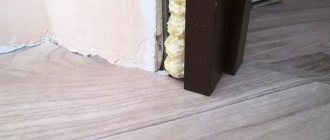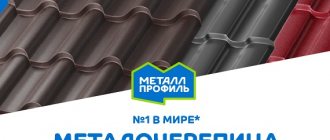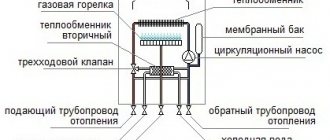During major renovations or arrangement in new buildings, it is recommended to carry out repair work from above: starting with the ceiling slab and completing it with decorative finishing of the floor, so as not to damage the coating in the process. However, in practice, everything is not so simple and some repairs have to be done in conditions where the floor covering has already been manufactured. In such a situation, it is extremely important to protect the finish from dust, dirt, scratches, deformation and damage.
How to cover the floor during renovation
If you have to renovate your apartment, but the floor in the room is ideal and does not require a new coating, it is important to think about how to properly protect it from dust and dirt.
This is especially important when the floor has expensive parquet or marble. This applies to both the kitchen and the hallway, bedroom, living room. If renovations are being carried out in the kitchen, where there is already equipment, then it must either be turned off temporarily or taken out of the room. Don't worry if your stove doesn't work for a day. You definitely won’t remain hungry, as you can order a delicious and large pizza on https://omnomnom.dp.ua/pizza, which will be enough for everyone.
Repair equipment
Before starting work, the rigid legs of supporting structures: stairs, stepladders, metal tables and other similar structures should be wrapped in a soft rag or covered with felt. It is advisable to additionally lay thin fabric under building structures: for example, old sheets. This will protect the floors from scratches during work. Tools for performing repairs: drills, hammer drills, chisels, spatulas, etc., do not need to be placed directly on the floor. You should prepare a special place, for example, a table or lay a cloth on the floor on which the tools will be placed.
Floor protection is required not only in the room where renovations are being carried out. Take care of the passage areas: corridors and bathrooms, especially if you are planning a wet stage with dilution of building mixtures and frequent use of tap water. In this case, you can limit yourself to one layer of thick film.
Floor protection with film and cardboard
Now let's start protecting the floor. First, it’s worth assessing the area of the floor that needs to be protected. Will it be one room or a floor throughout the apartment? This generally determines how many meters of film and cardboard you will need. After all, cardboard and film are the most affordable materials.
At the first stage, you should cover the entire floor with cardboard: you need to cover it so that there is a margin on the sides. Next, the film is laid on top of the cardboard. Before laying the cardboard, make sure that there are no metal staples on its surface. If they are present, they must be pulled out, otherwise they may scratch the floor covering.
Advantages of covering film
This material is highly elastic, often completely transparent, and is based on LDPE (high-density polyethylene). It has many advantages over garden and cling films:
- easily stretched and compressed;
- tightly fits any hard or soft surface without flaws;
- the shape of the surface does not matter;
- does not require heating for a strong connection;
- this film is dustproof;
- has ideal water-repellent properties;
- excellent strength under any deformation and mechanical stress;
- Easy to attach and effortless to remove.
With such characteristics, covering films for repairs have become not only reliable protection for furniture and interior items, but also turned out to be very popular for transporting various goods on pallets - palletizing. And this is not only furniture when transporting from one house to another apartment.
Polyethylene film is:
- reliable fixation of cargo stowed in flight;
- facilitating loading and unloading operations;
- reliable protection from damage and dust;
- compact placement in containers, transport bodies and wagons;
- the ability to quickly transport and stow cargo using a forklift and other lifting mechanisms;
- optimized storage using multi-tier racks;
- prompt delivery of any cargo to the warehouse or directly to the buyer.
A trip to the hardware store for film
In total we got: 17.5+3.75+5=26.25 square meters. It is important to note that you need a thick film for lining it on the floor, and not the one we used when we covered furniture to escape construction dust in the article: What are the means of protection against construction dust:
Typically, thick film is sold in rolls in construction hypermarkets. The seller asks how much you need and cuts the required length. The same film (usually black) is sold in separate packaging. It looks like this when opened:
Conducting a comprehensive assessment of all work
Next, you need to understand what work basically needs to be done. If, for example, during work you need to dilute cement or putty, you will periodically need to go to the bathroom to get water across the corridor. If you already have a good floor in the corridor, then it also needs to be protected. We take a pen and write down: 1.5 x 2.5 = 3.75 square meters - the area of the corridor.
The same assessment must be made in relation to other objects, for example the kitchen. Let's say we estimate that we need to cover another 5 square meters.
Cardboard mining
I’ll honestly tell you how many times I’ve done repairs, but I’ve never bought cardboard! Logically, you need it for the same area as you took the film for, i.e. 26.25 square meters. Where can I get it?
If you still haven’t gotten cardboard for free, you can buy it at a construction hypermarket in the form of prefabricated cardboard boxes.
Lucky are those who have a car. In general, it’s hard to do repairs without a car, but it’s possible. If you don’t have a car, then you need to find a private owner who will agree to deliver the cardboard to your home.
Estimation of the quantity of purchased film
Most film sold in rolls or packages has a standard width of 1.5 meters. Moreover, the film is always double in this case. In order to save money, I recommend that you count on the fact that you will cut it at home and get a width of 3 meters. It is better to take a film that is thicker. It’s true that it will be more expensive, but when you cut it, it will still be acceptable for protection.
Let's do the calculation. We need to cover 26.25 square meters. For a width of 3 meters we need: 8.75 meters in length. If you take the film not in ready-made packages, but from a roll, take a little extra - it will definitely come in handy. For our case, we can take 10 meters with a margin.
But that is not all! We need to take this length 2 times. Why? This is what technology requires. So, we take 20 meters.
How and with what to protect the floor (parquet, laminate) during repairs
So, we begin to show the technology of how and with what to protect the floor during repairs.
Laying film on parquet
The first step is to cut the film to get 3 meters out of 1.5 meters width. After that, we begin to cut it and cover the parquet:
Laying cardboard over film
Before laying down the cardboard, inspect it and remove any metal staples. Usually the cardboard is covered with them, if previously this cardboard was boxes.
How to remove protection
When removing the protective layer from the floor, follow the technology. First, remove all debris from the surface of the film and vacuum it. You can wipe the film with a damp cloth. This will prevent dust and debris from getting on the decorative coating. Only after this, disconnect the tape from the baseboards and remove the layer of film, rolling it up in the process.
These recommendations will help protect decorative flooring, including expensive parquet, from all kinds of scratches and defects, even during major repairs with wet work. In addition, it will save time on general cleaning later.
Global reshuffle
A convenient solution for owners of apartments with several rooms, especially if the renovation affects only one room. To do this, you need to find two to four physically strong assistants to take out all the contents - upholstered furniture, cabinets, cabinets, household appliances, and so on.
The only drawback is that the room in which all the furniture is stored will be non-functional during the renovation period. You will have to allocate a separate room for living, or live in another housing altogether.
What can it be used for?
Covering film quickly found application in auto repair shops. Protective film with adhesive tape is especially in demand here, which ordinary citizens attach to walls for:
- carrying out painting and plastering work without dust. In this case, the film is attached to the ceiling at a distance of 1-1.5 m from the wall;
- protection of already painted surfaces;
- drawing a boundary between different colors or materials on the same wall.
As a matter of fact, for exactly the same purposes, painting film with adhesive tape along the edge is used for painting and tinting a car body. Taking into account paintwork materials in the process of body repair is very important - each enamel has its place! Primer, paint, varnish are applied to strictly defined areas, but all other surfaces must be separated - masked.
To mask (cover) areas not to be painted, a covering film with a paint rim is used. The tape itself serves as the base - it is crepe paper with a finely folded surface (crepe), which provides it with increased elongation when tensioned before breaking. The adhesive layer is natural rubber.
In the video: film with masking tape.
Polyethylene protection-camouflage has earned the trust of auto repairmen because... has a smooth, lint-free coating, high statistical data, a tight fit to the body, heat and wear resistance, easy to glue and remove after use, which allows painting as quickly as possible.
It is easy to buy such LDPE material at any hardware, construction or automotive store. Its cost is low compared to the cost of a car or new furniture damaged by careless repairs.











